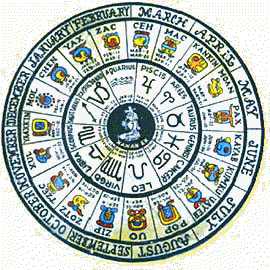
Solstices and especially equinoxes have a very special place in the Mayan religion and culture. As the Mayans relied a lot on the sun in their cosmology and beliefs, each solstice and equinox celebrate a special time or renewal during the year. Learn more about this in the following article !
What is a solstice and an equinox ?
Solstice
The word “solstice” derives from the Latin words “sol” : Sun, and “sistere” : to stand still. Solstice happens twice during the year, when the sun reaches its highest point during the solstice summer, or its lowest point during the winter solstice. Due to the sun’s position twice during the year, the Northern Hemisphere will know the winter solstice on December 21st or 22nd, marking the beginning of the winter while the summer solstice, introducing summer, will occur on June 20th or 21st. However, the situation is the exact opposite for the Southern Hemisphere as seasons are reversed.
Equinox
The word “equinox” derives from the Latin words “aequus” : equal, and “nox” : night. Equinoxes also happen twice a year, but unlike the solstice, they mark two times of the year during which daytime and nighttime are equals. This phenomenon, happening twice a year, is the result of the sun’s position above the equator. Thus, the Northern Hemisphere will know the autumn equinox between the 21st and 23rd of September while the spring equinox occurs generally on March 20th or 21st. just like the solstices, as the seasons are reversed, the Southern Hemisphere will know its spring equinox in September and the autumn equinox in March.
The sun and the sky in the mayan religion and hierarchy
The Mayans attached a huge importance to the sun for their daily life and religious beliefs. Indeed, they believed that the observation of the sky was essential to communicate with their gods in order to predict the time, what the gods needed and how the Mayans should honor them. According to their own beliefs, the Mayan god Itzamna is the god who created the world and the humans. He is also often referred to as the God of the Sun Kinich Ahau. Kinich Ahau was the god shining in the sky all day before turning into a jaguar once the sun came down to enter the Mayan Underworld, Xibalba. During the Classical Period, Kinich Ahau was used as a royal title, meaning the king had both the title of king and deity of the sun, showing how the sun was important to Mayan religion.

Thus, the sun had an essential place in the Mayan culture and hierarchy. Astronomers were very numerous and as the king was titled with the name of the God of the Sun, this celestial body seemed to have an authority for both the religious and daily life calendar. Astronomers, highly considered in the Mayan hierarchy, held huge knowledge about the sun and the sky and could predict eclipses, movements of the sun, equinoxes and solstices with a great accuracy.
Solstices and equinoxes interpretations
Each solstice and equinox marked a special period of the year in the Mayan culture.
The winter solstice
The winter solstice, rather than being considered as a dark day because of the shortest day of sun of the year, the winter solstice was seen as a symbol of renewal. The Mayans believed this day to be the rebirth of the sun for the upcoming year, knowing that from this day each following day will be sunnier than the last one.
The summer solstice
The summer solstice was more a time to balance the earth energy. It indicated the longest day of the year but more importantly the second phase of the earth’s fertility, which began with the spring equinox.

Both of the equinoxes had an enormous place in the Mayan culture.
The spring equinox
The spring equinox marked the day where it was believed that Kukulkan, also known as the Feathered Serpent God, would come down to the Earth. Kukulkan represented rejuvenation and renewal, thus his appearance during the spring equinox would mark the beginning of the planting cycles.
The autumn equinox
The autumn equinox also marked the day where Kukulkan would visit the Earth six months after the spring equinox. This day of his visit also announced the annual harvests of food and supplies, before the winter starts and until the next spring equinox.
Equinoxes in Chichen Itza
Equinoxes in Chichen Itza are one of the most impressive demonstrations of Mayan knowledge related to astronomy and religious beliefs. The archeological site is built in a way that on every spring and autumn equinox, when the sun starts to set, it would cast a shadow on the main pyramid of the Feathered Serpent God descending the northern staircase of the pyramid, joining either the Heavens of Xibalba, the Mayan Underworld. The Mayans believed that this descent, or ascension, provided blessing for a full harvest as well as a sign of good health for his worshippers. Millions of visitors gather during each equinox to witness this amazing show.

